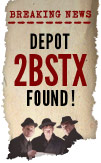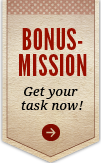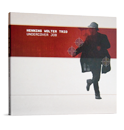Do I need to be able to read music?
Rudimentary musical knowledge from schooldays is advantageous. If you’ve forgotten it all, no problem. Everything you need to know about music theory – if needed at all – will be made available to you during the relevant missions.
Where can I get help if I don’t understand the notes?
Click on the HELP button and you’ll be given a “Little Lesson” in music theory.
Why do I only hear a short clip of some pieces?
Some of the compositions are quite lengthy. In order to make it easier for you to decode, in such cases we have only provided the key section of the track for listening. The complete pieces can be heard on the CD UNDERCOVER JOB.
Where can I find information to use to decode the secret messages?
There are hints hidden at the individual game levels that will help you solve the riddles and in your search. Pay attention to every detail, especially to the active regions of the images!
You’ll find additional information in the booklet of the CD “UNDERCOVER JOB” (Henning Wolter Trio), on which all of the compositions in this game can be heard.
Also, you will receive further hints at concerts by the Henning Wolter Trio, which will later be published on the page “News” or in the newsletter.
What if my solution is incorrect?
If your solution is not correct you should make sure that you have really found all of the information. Go through all of the pages again. Perhaps you overlooked an important bit of information. You must enter the correct solution to reach the next mission.
What kind of treasure is it?
The treasure is located in Depot 2BSTX. Secrecy is still being observed about the contents. The agents of the Henning Wolter Trio will reveal the contents of the depot at an as yet unknown point in time. Wait for the surprise!
How can secret messages be hidden in musical compositions?
The simplest way, of course, is to form words from the designations of the notes c, d, e, f, g, a, b and their sharps and flats. The disadvantage of this is that not all the letters of the alphabet are available.
Yet there are a number of other methods that can be devised. There are no limits to the imagination.
Here are two examples that require no musical knowledge whatsoever:
Graphic approach (JOB)

The number of notes in one measure
Each letter of the alphabet is allocated to a number:
A=1, B=2, C=3, etc. For example, if 2 notes are in one measure, this corresponds to the letter “B”.

1st measure: 10 notes = J // 2nd measure: 15 notes = O // 3rd measure: 2 notes = B
Notation knowledge is needed for the next example.

In the top row of this table, you see the column allocations for rests and all 12 notes. In the left column, there are two groups for the lengths of the corresponding notes or rests. In this example we now determine that group 1 contains all notes/rest lengths that are smaller than a half note or half rest. Group 2 includes all lengths that are the same or greater than a half note or half rest.
The small letters stand for the 26 letters of the alphabet, from which the text to be encoded is formed.
We now want to encode the word “job”.
We find the letter “j” in group 1 under the note G#.
The “o” is in group 2 under the note C, the “b” in group 1 also under the note C.
For the “j” we can now encode a G# as a note, for example, with the length of a quarter note, an eighth note, dotted quarter note, etc. We can let our musical taste be our guide in deciding which of these lengths we choose. We do the same for the other letters.
As a result, the following succession of notes is possible:

However, the above examples are not used in the UNDERCOVER JOB missions.
Each composition of UNDERCOVER JOB has its own encoding method. Only “New Hero, Nowhere” and “New Hero, Nowhere (Reprise)” have identical codes and secret messages.




